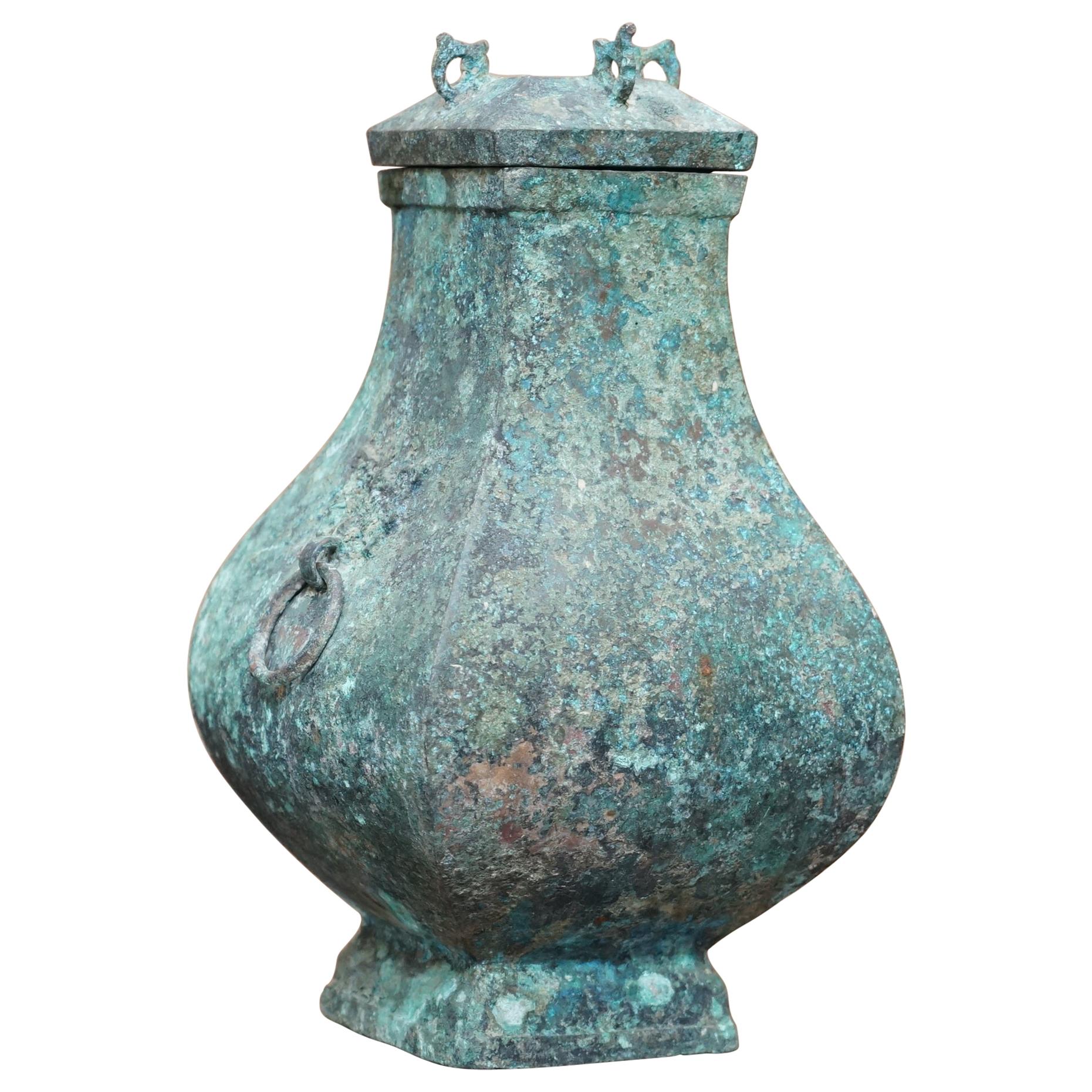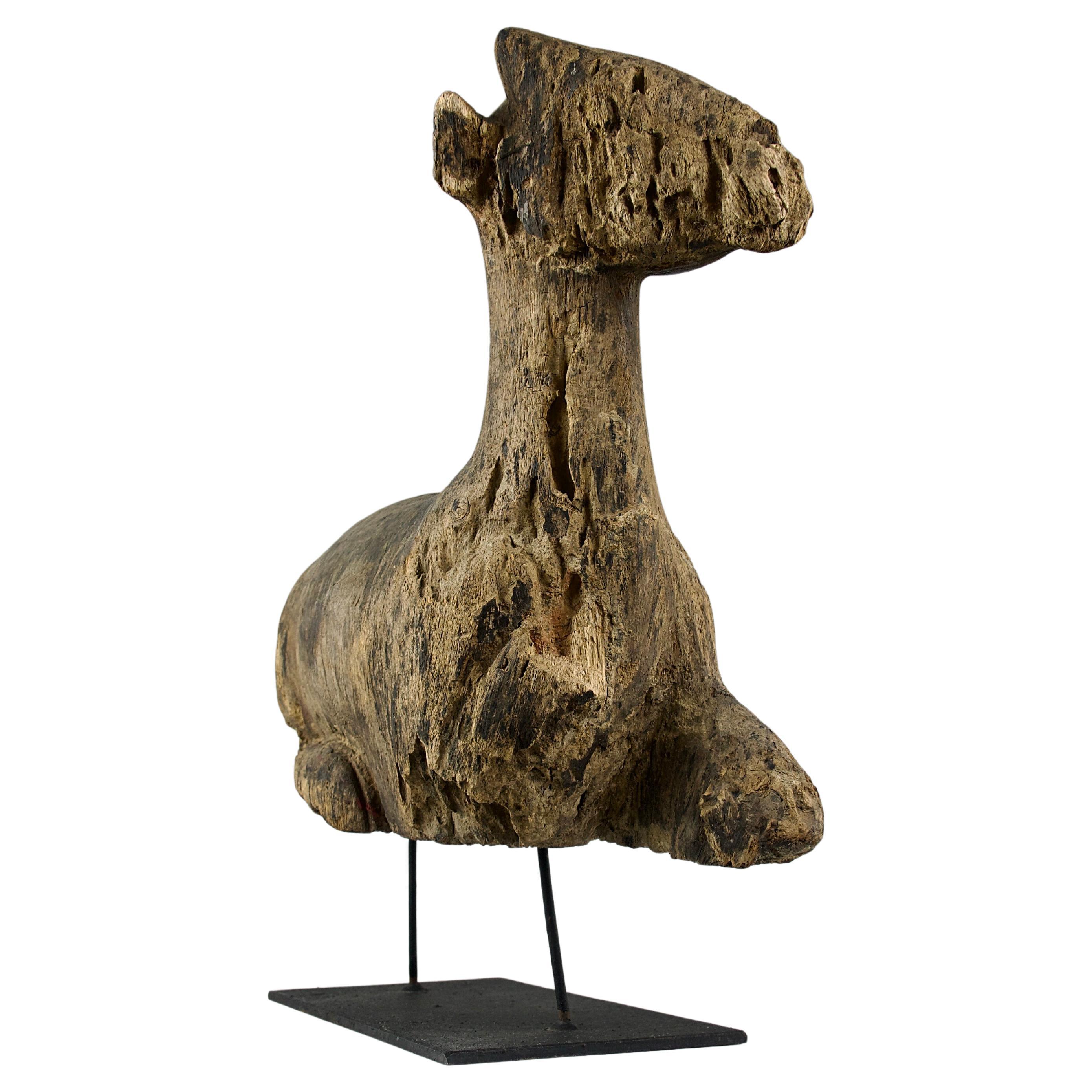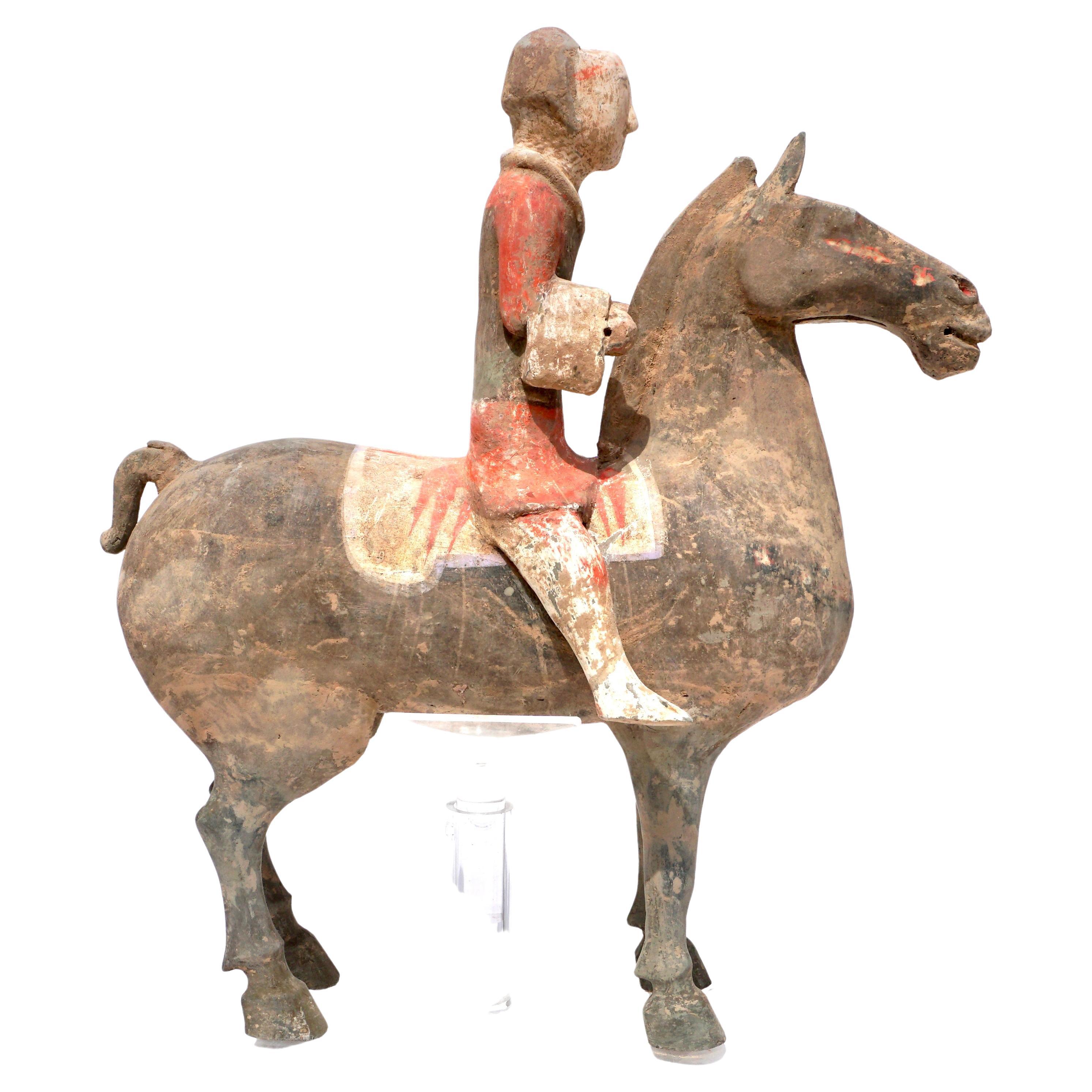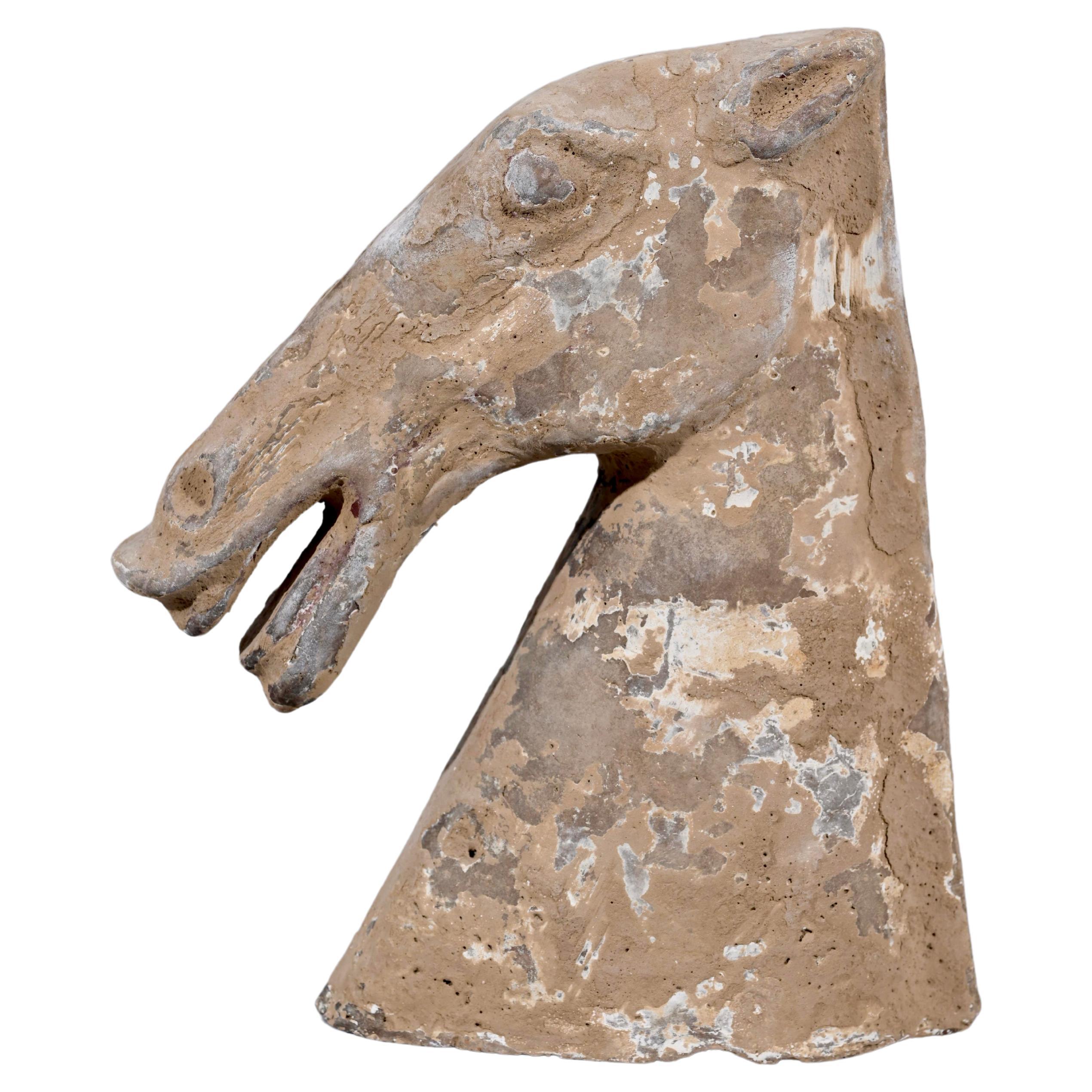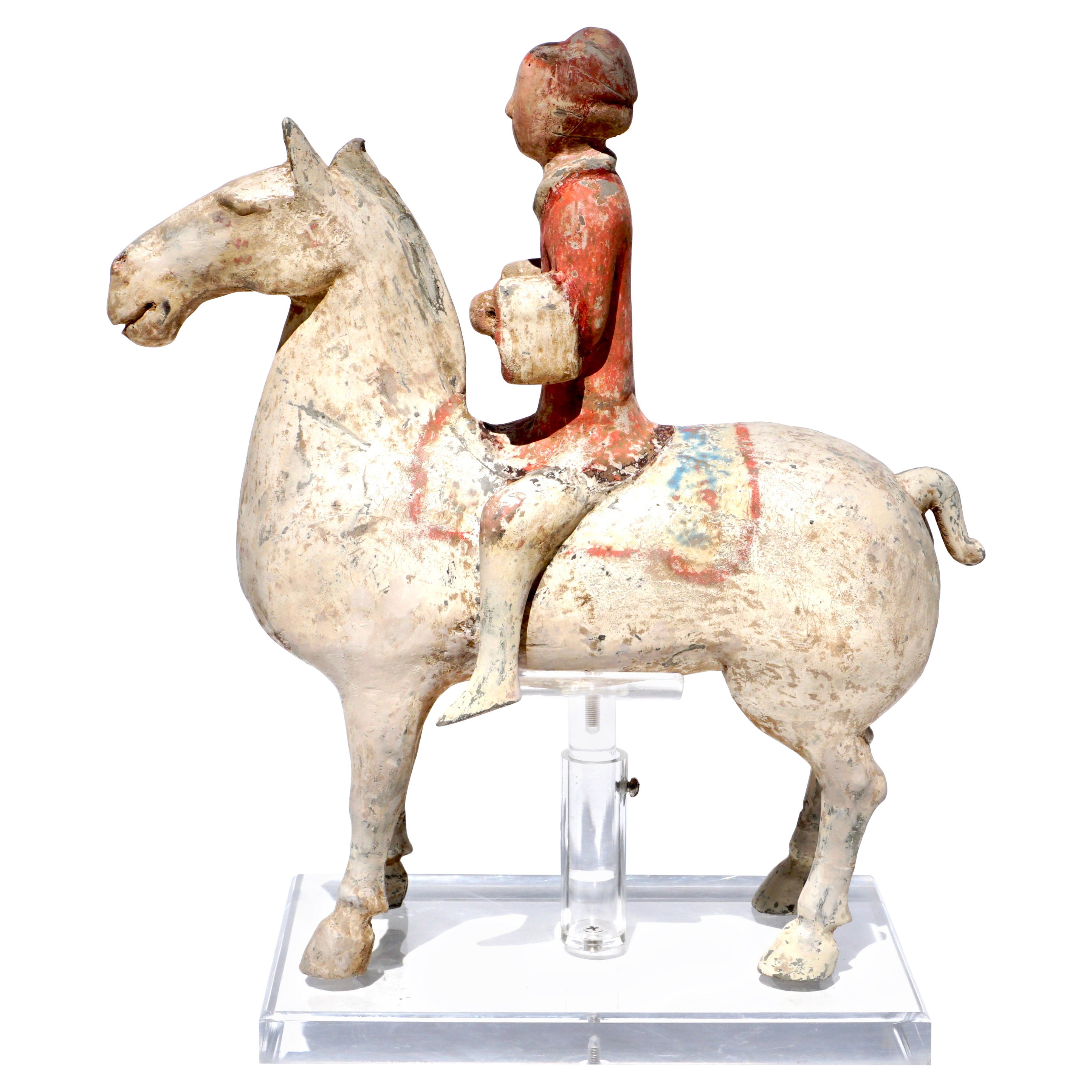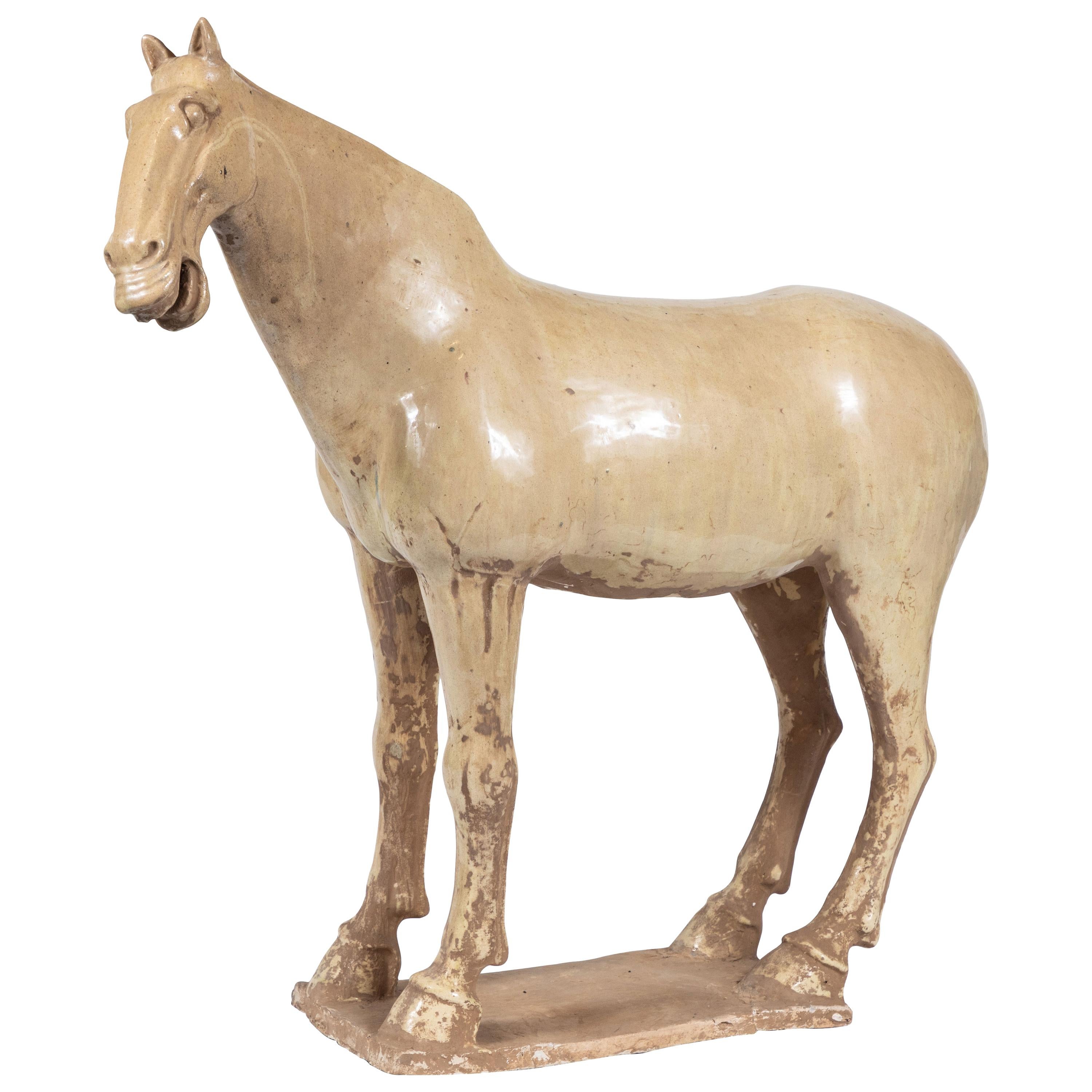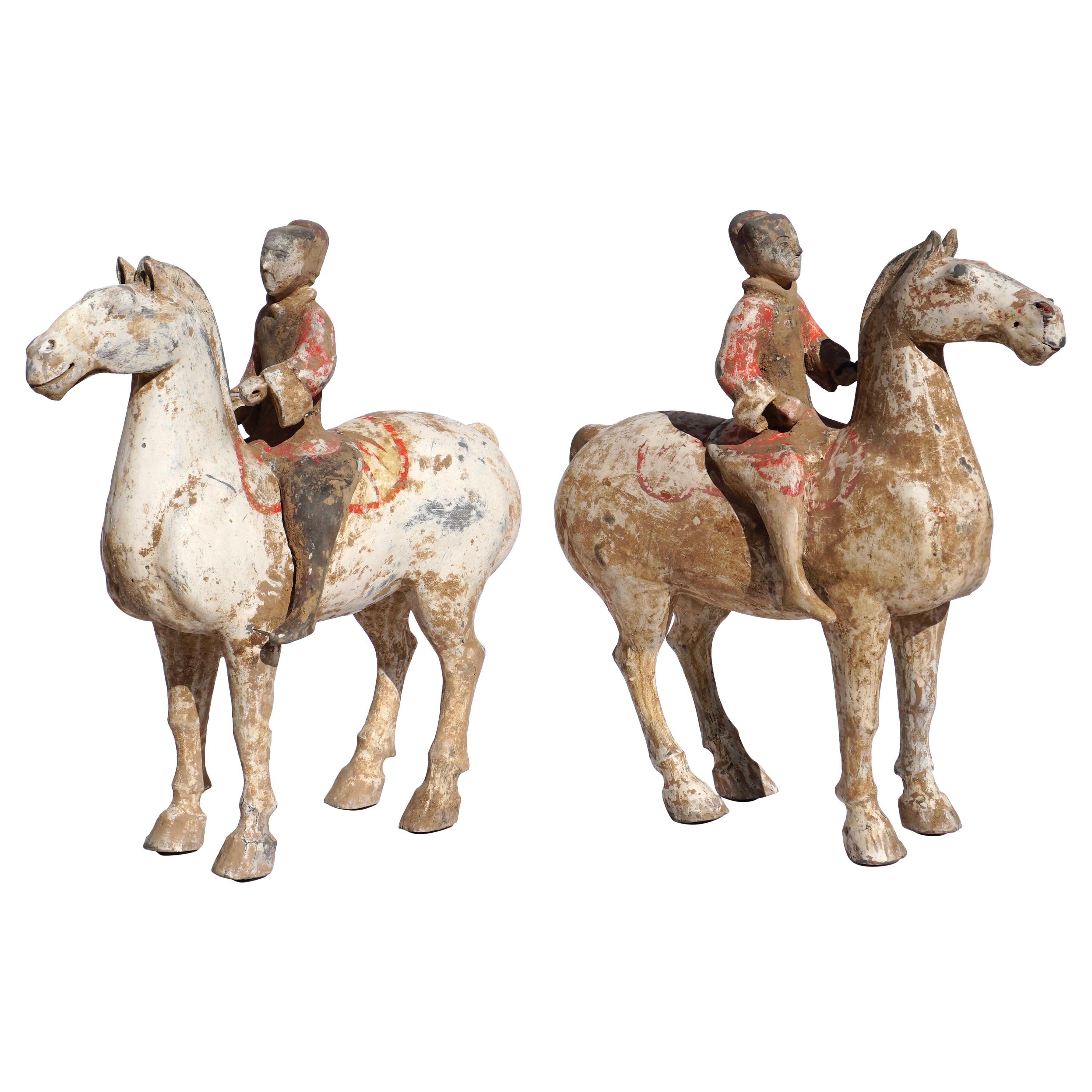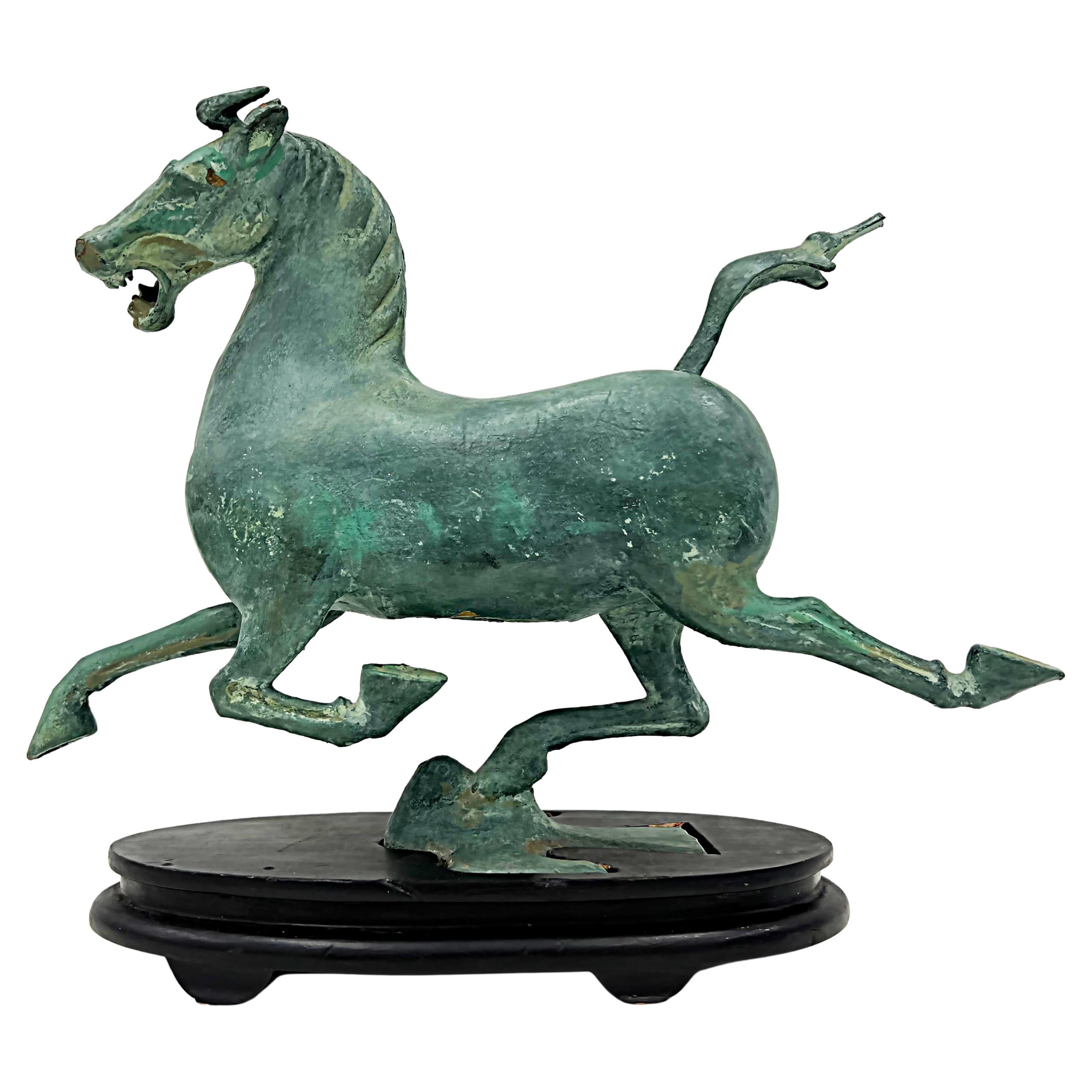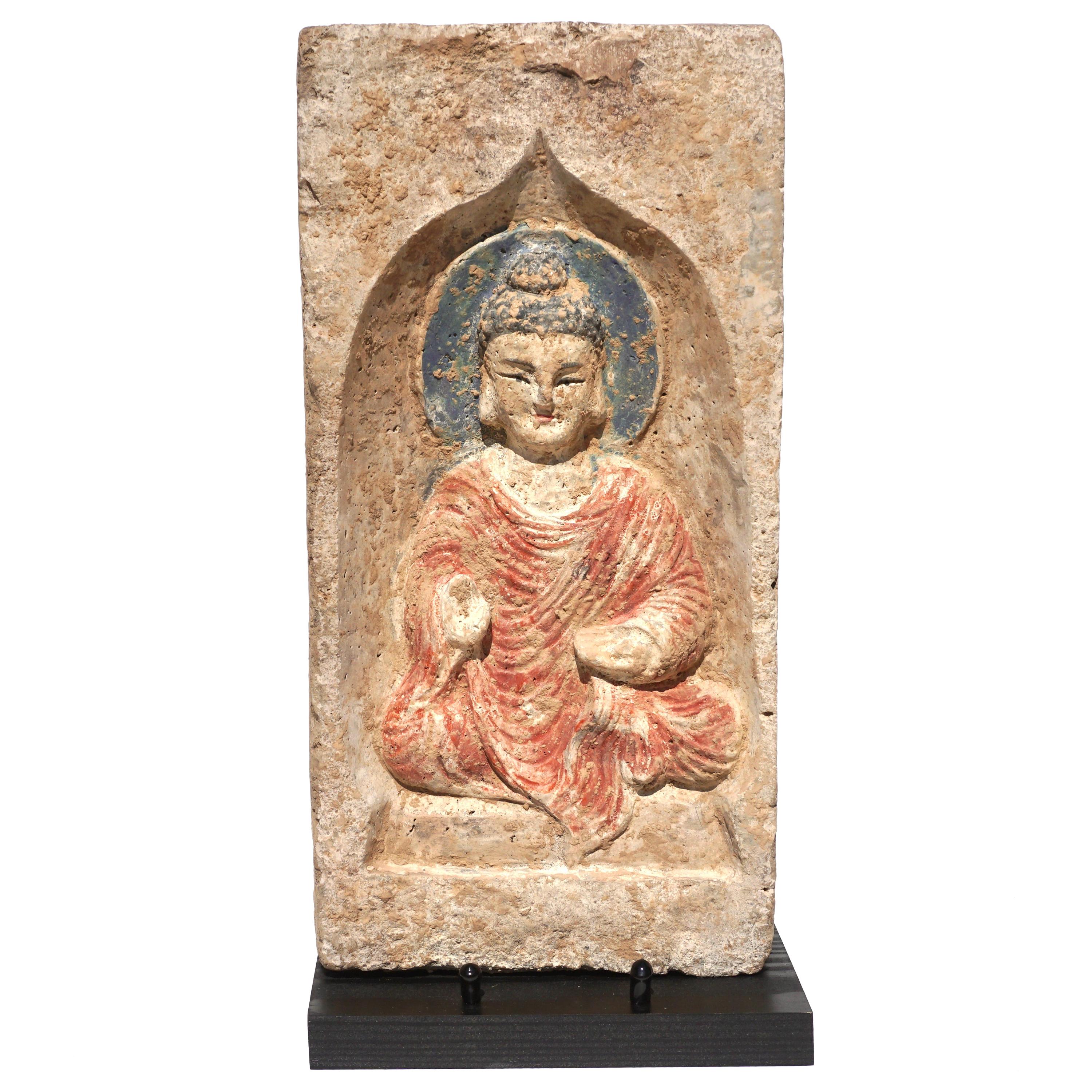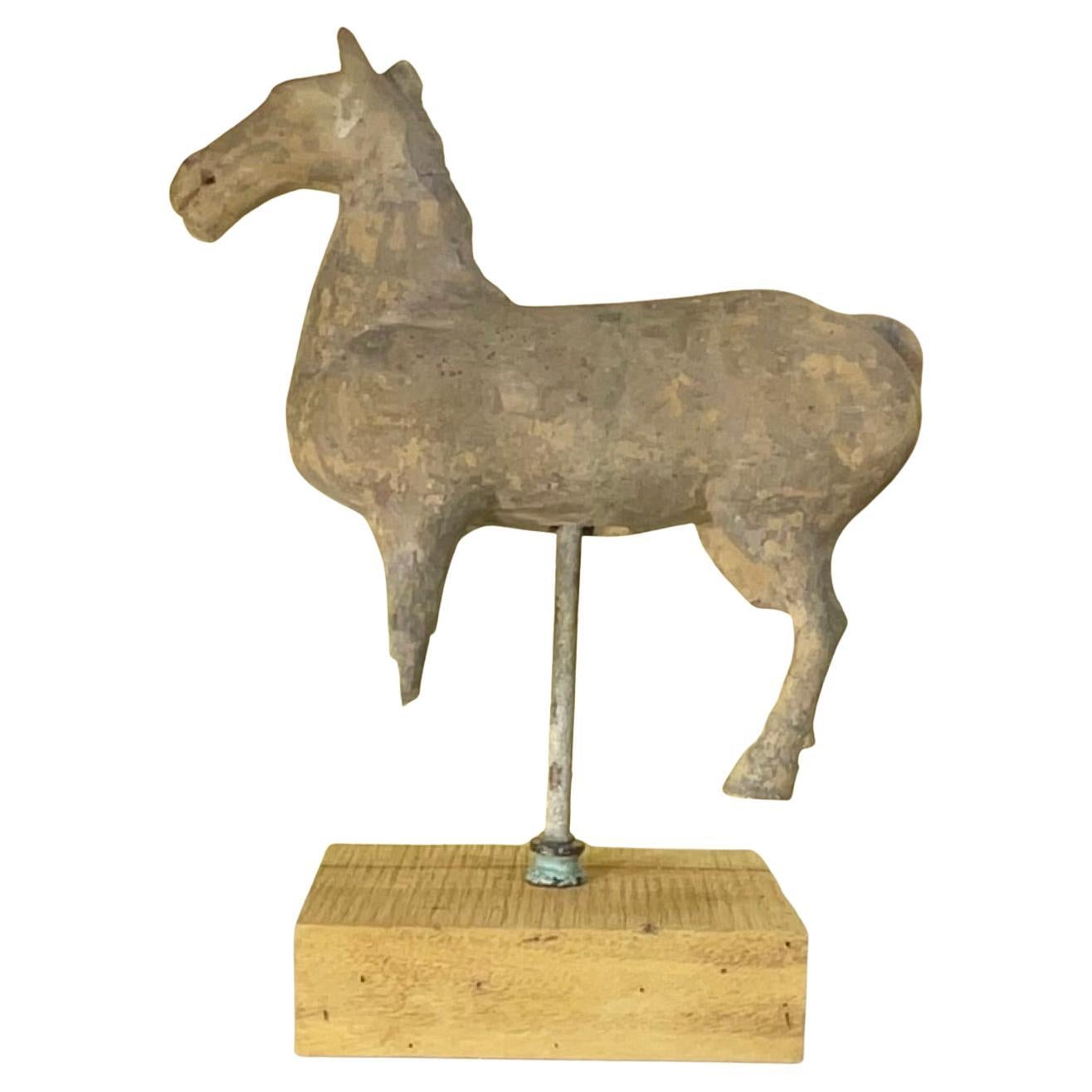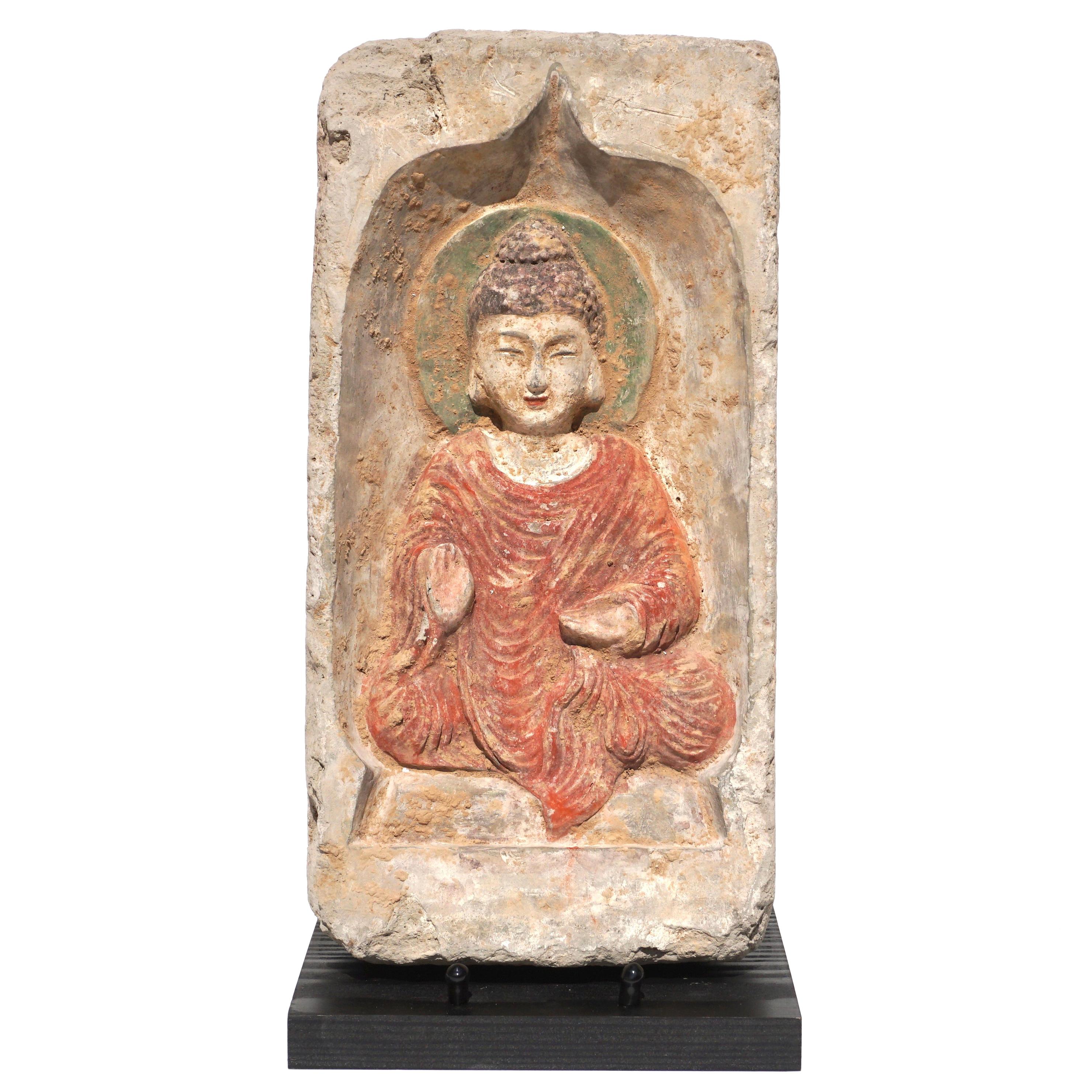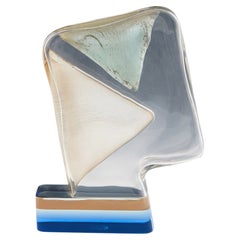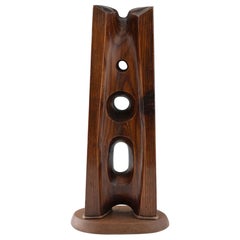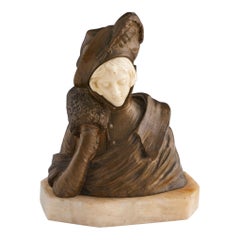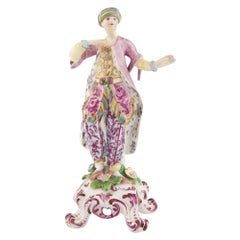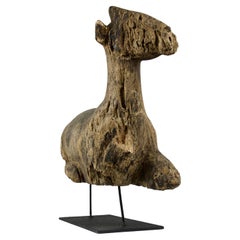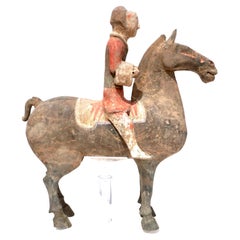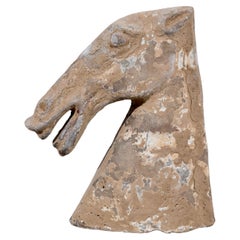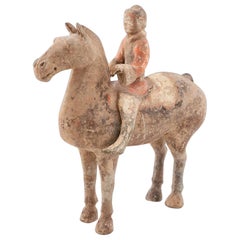
Han Dynasty Horse Sculpture, 206BC- 209 AD
View Similar Items
Want more images or videos?
Request additional images or videos from the seller
1 of 9
Han Dynasty Horse Sculpture, 206BC- 209 AD
About the Item
- Dimensions:Height: 11.42 in (29 cm)Diameter: 11.03 in (28 cm)
- Style:Han (Of the Period)
- Materials and Techniques:
- Place of Origin:
- Period:
- Date of Manufacture:206 BC- AD 209
- Condition:Repaired: The front right leg and rear left leg have been restored. The painted face is still remarkably detailed after 2000 years. The front right leg and rear left leg have been restored.
- Seller Location:Tunbridge Wells, GB
- Reference Number:Seller: 220318021stDibs: LU8525234852382
About the Seller
5.0
Vetted Professional Seller
Every seller passes strict standards for authenticity and reliability
Established in 2014
1stDibs seller since 2023
77 sales on 1stDibs
Typical response time: 16 hours
Authenticity Guarantee
In the unlikely event there’s an issue with an item’s authenticity, contact us within 1 year for a full refund. DetailsMoney-Back Guarantee
If your item is not as described, is damaged in transit, or does not arrive, contact us within 7 days for a full refund. Details24-Hour Cancellation
You have a 24-hour grace period in which to reconsider your purchase, with no questions asked.Vetted Professional Sellers
Our world-class sellers must adhere to strict standards for service and quality, maintaining the integrity of our listings.Price-Match Guarantee
If you find that a seller listed the same item for a lower price elsewhere, we’ll match it.Trusted Global Delivery
Our best-in-class carrier network provides specialized shipping options worldwide, including custom delivery.More From This Seller
View AllPavel Hlava Head Sculpture, 1994
By Pavel Hlava
Located in Tunbridge Wells, GB
Pavel Hlava Head Sculpture, 1994
Pavel Hlava is renowned for using the medium of glass for sculpture. Many of these are made up of cut and polished geometric segments of coloured ...
Category
20th Century Czech Figurative Sculptures
Materials
Glass, Art Glass, Blown Glass
Abstract Sculpture Charles Neville Bertram c1960
Located in Tunbridge Wells, GB
Heading : A signed abstract sculpture by Charles Neville Bertram in stained oak with teak base.
Date : c1960
Origin : Liverpool, England
Size : Height 52cm. Weight 3700g
Condition :...
Category
Vintage 1960s British Other Abstract Sculptures
Materials
Wood
Bronze Bust Of a Noble Lady by Dominique Alonzo c1910
Located in Tunbridge Wells, GB
Heading : Bronze Bust Of a Noble Lady by Dominique Alonzo
Date : c1910
Origin : France
Decoration : Marble base, ivory head
Size : Height 15.5cm, base 12.1 x 7.7
Condition : Excell...
Category
Vintage 1910s French Busts
Materials
Marble, Bronze
A Bow Porcelain Figure of a Turkish Dancer, c1765
By Bow Porcelain
Located in Tunbridge Wells, GB
A Bow Porcelain Figure of a Turkish Dancer, c1765
Additional information:
Date : c1765
Period : George III
Marks : Unmarked. Label for Albert Amo...
Category
Antique 18th Century English George III Figurative Sculptures
Materials
Porcelain
A Bow Porcelain Figure of a Female Turkish Dancer, c1765
By Bow Porcelain
Located in Tunbridge Wells, GB
A Bow Porcelain Figure of a Female Turkish Dancer, c1765
Additional information:
Date : c1765
Period : George III
Marks : Unmarked
Origin : Bow, ...
Category
Antique 18th Century English George III Figurative Sculptures
Materials
Porcelain
Rene Lalique Sanglier Car Mascot Marcilhac 1157, Designed 1929
By René Lalique
Located in Tunbridge Wells, GB
Rene Lalique Sanglier Car Mascot Marcilhac 1157, Designed 1929
Additional Information:
Heading : Rene Lalique 'Sanglier' (wild boar) car mascot
Date : Designed 1929
Origin : Wingen...
Category
20th Century French Art Deco Animal Sculptures
Materials
Glass, Art Glass
You May Also Like
Fanghu Han Dynasty 206BC-220AD Chinese Bronze Ritual Wine Vessel Jug & Cover
Located in West Sussex, Pulborough
We are delighted to offer for sale this exceptionally important and highly collectable museum quality original Chinese bronze ritual wine vessel and...
Category
Antique 15th Century and Earlier Chinese Han Antiquities
Materials
Bronze
$33,174 Sale Price
20% Off
Han Dynasty, Laying Doe Wood Sculpture, China 100AD
Located in PARIS, FR
Superb sculpture of a laying doe from the Chinese Han Dynasty (206BC-220AD). Remainders of polychromic paint, namely red, symbol of good fortune and joy as well as the season of summer, and green, symbol of vigor and vitality and the season of spring. Mounted on base.
A similar sculpture in bronze is kept at the Met Museum with the following description " A low bed, small table, and screen were often the only furnishings in a Han-dynasty room. The floors were generally covered with mats kept in place with weights in the shape of single animals, fighting beasts, or entertainers."
Condition seen in pictures.
Dimensions in cm ( H x L x l ) :
- Sculpture : 35 x 40 x 10
- With base : 45.5 x 44 x 15
The Han Dynasty ruled China from 206 B.C. to 220 A.D. and was the second imperial dynasty of China. It is known for its promotion of Confucianism as the state religion and opening the Silk Road trade route to Europe, permanently altering the course of Chinese history. Han Dynasty art and inventions like paper still influence the world today.
From the Han Dynasty to the present, deer can be found in many materials and media—rock crystal, nephrite, ink on paper, porcelain, cloisonné enamel, jade, bamboo root, textile, bronze, etc.—alone or in groups, among trees and rocks and in various positions. They appear on everyday objects, from boxes to incense burners, incense holders, lamps, mirror holders and the droppers scholars used when they wrote. A symbol of longevity and grace in Chinese mythology, the word deer is pronounced lu, a homonym for emoluments—favors granted to officials. They therefore represent wealth, nobility and success in imperial examinations (civil service exams for selecting candidates for the state bureaucracy in Imperial China).
Deer were the faithful companions of Shu Lao, the god of longevity, and the goddess Magu. They were reputed to live long and to be the only creature able to find the mushroom of immortality, linghzhi. Although its spots are different, deer are sometimes confused or associated with stags, a Manchu hunting trophy whose antlers served to make prestigious furniture. (La Gazette Drouot, Claire Papon)
For the colours found on this piece, in Chinese culture, red symbolizes good fortune and joy. Green, symbolizes the spring when everything is brimming over with vigor and vitality.
The Han Dynasty (206 B.C. to 220 A.D.) continued the Qin Dynasty’s use of dark colours, but incorporated red. During the earlier years, or Western Han Dynasty, ordinary people wore red while court dress was black. Shoes were red in color. The clothing worn for sacrificial rites was black edged with red. In the later Eastern Han Dynasty, red symbolized the dynasty’s “fire Virtue” and became predominant. Court dress was red. Sacrificial rites called for a red-edged white layer under robes with red socks...
Category
Antique 15th Century and Earlier Chinese Han Mounted Objects
Materials
Wood
Han Dynasty Polychromed Horse and Rider
Located in Dallas, TX
A fine Han dynasty polychrome painted terracotta horse and rider. The warrior is dressed in orange and black on a black horse.
Measures: Height 14 inches (35 cm)
Width 12.5 inches (32 cm).
Condition: Excellent with tastefully undetectable repairs.
During the unification of China under the Han dynasty, bands of mounted nomadic warriors from the north threatened the country. In order to thwart their attacks, the Chinese sought to import stronger, faster steeds from Central Asia (as opposed to the Mongol ponies used by the invaders), eventually leading to the creation of the Silk Road. This small sculpture of a mounted soldier reveals the crucial military role of the horse. When compared to the diminutive stature of the rider, the importance of the horse becomes readily apparent. This creature provided security and strength, allowing the empire to secure its borders and expand its influences across Central Asia. The magnificent regalia of the horse, including a brilliantly painted saddle in red and green/gold, reflect the respect this animal received. The warrior as well is gorgeously decorated with a painted red tunic and gray chest...
Category
Antique 15th Century and Earlier Chinese Han Figurative Sculptures
Materials
Terracotta
Chinese Han Dynasty Pottery Horse Head
Located in Bradenton, FL
Chinese Han Dynasty Pottery Horse Head. Crisply modelled with sharp features, including a gaping mouth, nostrils, eyes, ears and an alert exp...
Category
Antique 15th Century and Earlier Chinese Han Animal Sculptures
Materials
Pottery
Han Dynasty Pottery Horse and Rider
Located in Dallas, TX
Han Dynasty painted pottery horse and rider
A Chinese Han Dynasty painted pottery horse & rider. Made from grey pottery and cold-painted in white, red and black pigments. The rider dressed as a warrior and in the pose of holding reins for the horse. Comes with a custom sturdy lucite stand.
Measures: Height: 13.5 inches (33cm).
Length: 13 inches
Depth: 5 inches
Han Dynasty (206 BC – AD 220).
Condition: Very good with past restoration to legs.
The great influence of the horse throughout the history of China can...
Category
Antique 15th Century and Earlier Chinese Han Animal Sculptures
Materials
Pottery
Large, Han-Style Horse Sculpture
Located in Los Angeles, CA
Grand, crème glazed terracotta, Han-style, braying stallion sculpture.
Category
Vintage 1980s Chinese Han Animal Sculptures
Materials
Terracotta
Recently Viewed
View AllMore Ways To Browse
Vintage Cat Ring Holder
Vintage Ceramic Quail
Vintage Dalmation
Vintage Lucite Owl
Vintage Rabbit Figurines
Vintage Terrier Dog Figurine
Zebra Carousel
Alligator Teeth
Andreas Zadora Von Gerlof
Antique Porcelain Pigs
Antique Roof Cats
Aviation Trophy
Baccarat Horse
Barye Elephant
Bear Baiting
Begging Dog
Berlot Mussier
Brass Deer Statue
